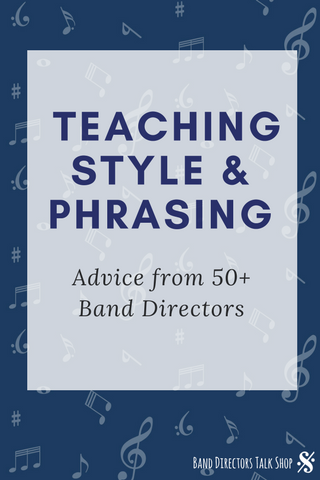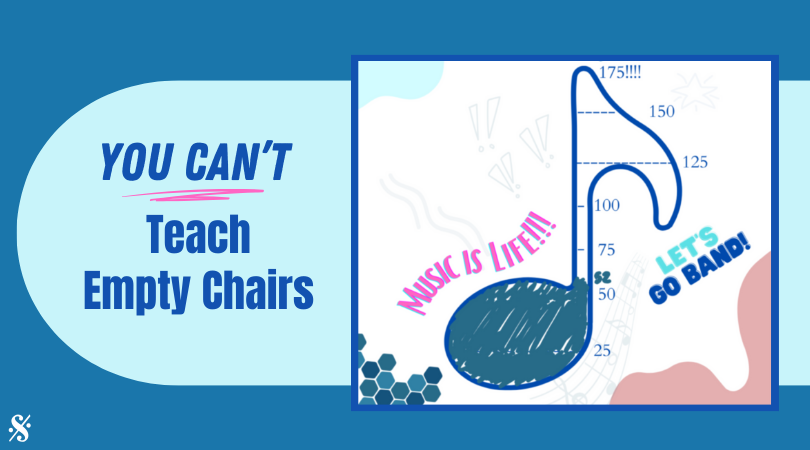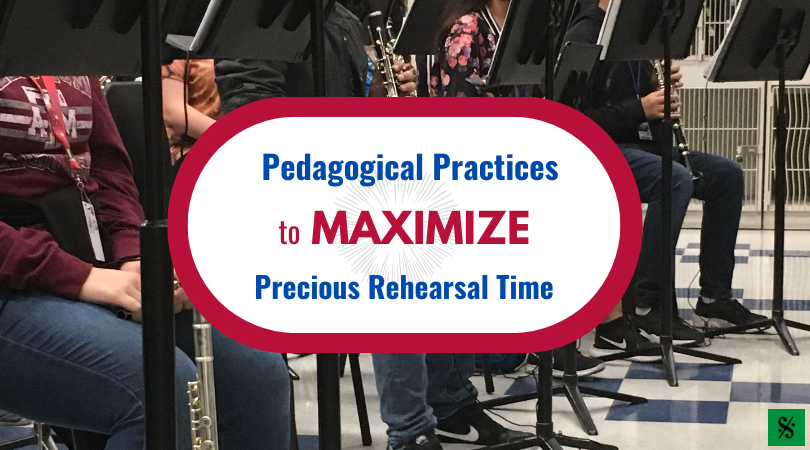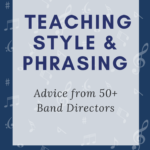In our summer survey, we asked Band Directors Talk Shop readers “What is the best phrase, analogy or activity you’ve ever heard/used regarding teaching phrasing or style?” With hundreds of responses to the survey, here are 50+ ideas to help you teach phrasing and style.
PHRASING
There was an overwhelming response to teaching phrasing and how it compares to our language and voice, sentence structure and our environment around us. See below for lots of great advice, said in so many different ways!
Speech and Sentence Structure Analogies:
- Phrases are like a musical sentence or idea.
- “You wouldn’t just….breathe in the middle….of your sentence.”
- I will speak like a baby learning to speak and then say the same sentence with fluidity. 10 year olds immediately understand what phrasing means.
- Every musical phrase is like a spoken sentence. Without the right inflection, articulation, and emotion, it becomes meaningless — just recited words.
- Playing musical phrases is just like reading fluent sentences. You wouldn’t want to hear “Onceupona……………timetherelived……………a girlnamedGoldilocksandoneday…………….”
- Using a sentence with 6-8 words, and repeating it, emphasizing a different word each time to point out phrase cadencing.
- You don’t breathe in the middle of <BREATH> a sentence. It just doesn’t <BREATH> make sense! Therefore, don’t breathe in the middle of a musical phrase!
Singing Analogies:
- How would you sing this?
- If you can sing it, you can play it. Your instrument is an extension of your voice. Play it as you would hope to hear it.
- Put lyrics to it–write a song. Kids are very creative.
- Sing it before you play it, kids can start by singing on a “meow”, this makes us all laugh together and get over our fear of singing in front of each other!
- Singing as a group to see where we want to breathe, or how to articulate a note
Water/Waves Analogies:
- Don’t part the water in the middle of a phrase.
- Music should be played like the waves in the ocean; smooth but with rises and falls.
- Phrasing is like water. Music must flow and weave.
Air Analogies:
- Play to the end of the phrase. If you can see through it (long notes) then you have to blow through it.
- Push air between the notes.
- Push the air forward. Play through the bar line.
- Don’t breathe on a bar line until the end of the phrase.
- Play through the note
- The music should breathe
- Through, not at
Other Phrasing Analogies:
- Show a visual of the SHAPE of the note or phrase
- Music is either arriving or leaving a focal point.
- Phrasing is like watching a flower open…it takes time and has continuous motion and then it is glorious. That’s how phrasing is. You can’t bump it open; you have to shape it, watch it, observe it, savor it and then the magic happens.
STYLE
General Style Tips:
- Style gets taught first, not last!
- A note before a rest is always longer than a note before a note.
- First beat in the measure is most important for defining meter; the last beat in the measure is most important for defining style.
- To teach style, I try to associate it with something they already know.
- Always encourage students to tell a story through the music that they are playing. Once we’ve identified what the story is, the music comes alive for them and style happens.
- I ask the ensemble to overdo what’s on the page to allow their artistry to have more meaning and impact.
- Teach style every day.
- Lift the notes, like a bouncing basketball. (for separated notes)
- When matching style as an ensemble, everyone has to be in agreement.
- Style is generally either marcato or legato – like peanut butter, smooth or chunky!
- Short notes are like ex boyfriends/girlfriends. No touching.
- Smooth like peanut butter for legato. Play like a large man in ballet shoes for marcato.
- Detached instead of separated.
Model & Demonstrate Style:
- Demonstrate how you want it played by either singing it, modeling it, having someone play it, or using a recording.
- “Imitate. Assimilate. Innovate.” ~ Clark Terry
- Modeling and listening to recordings of professionals.
- Bell tone
Dynamics Tips:
- “Rise and fall” for crescendo decrescendo and vice versa.
- Don’t breathe at the end of a crescendo, finish the race, cross the finish line.
- Never play softer than beautiful. Never play louder than beautiful.
- Play with peaks and valleys.
Most Mentioned Advice:
- Play it how you would say it.
- Phrases are like music sentences.
- Teach style first and teach it every day.
- Give students something great to imitate! Model for them constantly.
These suggestions are all reminders of how music is indeed the universal language! Let’s take these great tips and show our students how to communicate beautifully through their instruments. Thanks to all of our readers who took the time to fill out the survey. We love learning from you!
Related Reading:
ONE Thing that Improved Student Performance in Your Band (well, really 64)
Tips on Teaching Intonation from 50+ Band Directors
Teach Style First
If you would like to receive our weekly newsletter, sign up here.
Don’t forget to like us on Facebook too!
Learn. Share. Inspire.
BandDirectorsTalkShop.com









Leave a Reply
You must be logged in to post a comment.